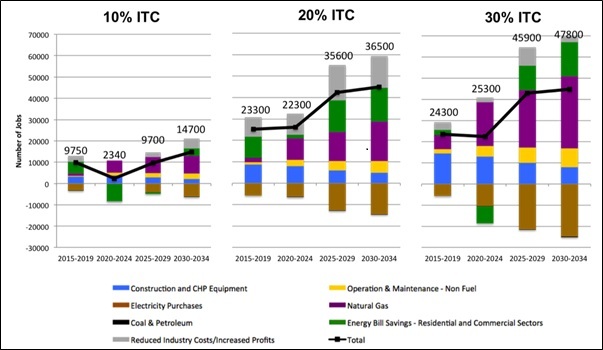Numerous studies of “green jobs” have shown positive outputs of clean energy policy legislation in jobs creation and sustainable economic development. Since the American Recovery and Reinvestment Act of 2009 (ARRA), these discussions of green job creation have increasingly focused on “energy-based economic development” that captures the integration of policy-driven transformations of energy systems for environmental and security goals with regional and national concerns for economic development and resilience. However, these studies shed little light on the relationship between clean energy investments and energy market dynamics including both direct and indirect employment development.
This research agenda in the Clean Energy Policy Laboratory (CEPL) at the Georgia Tech School of Public Policy seeks to understand the characteristics and potentials behind how federal subsidies can produce changes in energy consumption, production, and prices across the economy, including the industrial, residential, and commercial sectors. Focusing on a recent (August 2012) executive order implementation that has set a national goal of 40 GW of new industrial combined heat and power (CHP) by 2020,this study aims to assess the employment impacts of a sizable increase in the deployment of CHP systems driven by a federal investment tax credit (ITC). To investigate the relationship between energy efficiency investments and energy market dynamics, unlike other green job studies, we developed an analytical model to combine energy market projections derived from the National Energy Modeling System (NEMS) with sectoral employment coefficients taken from Input-Output (I-O) modeling.
The research team suggests that the expanded ITC policies would bring the industrial sector closer to achieving the executive goal, meeting 53% of the goal with the expanded 10% ITC, 61% with the 20% ITC, and 70% with the 30% ITC by 2020, while the reference case would achieve only 47% of the goal. This CHP installation growth would result in increases in the potential job creation across the economy, including the construction, CHP equipment installation, non-fuel O&M, and natural gas sectors.
Figure 1. Estimated Employment Impacts by Scenarios
More importantly for our purposes, the reduction of energy expenditures, which result from the declining average electricity prices, allows redirection of household income to more valued goods and services. It typically leads to employment gains as spending is redirected from the very highly capital intensive energy industries to more labor-intensive service and manufacturing industries. The jobs produced from this redirection are a benefit of efficiency improvements, and can be an important indirect consequence of environmental policies.
Links:
- The Job Generation Impacts of Expanding Industrial Cogeneration
- The Statewide Job Generation Impacts of Expanding Industrial CHP
Researchers:
- Dr. Paul Baer: paul.baer@gatech.edu
- Dr. Marilyn A. Brown: marilyn.brown@publicpolicy.gatech.edu
- Gyungwon Kim: joykim@gatech.edu

